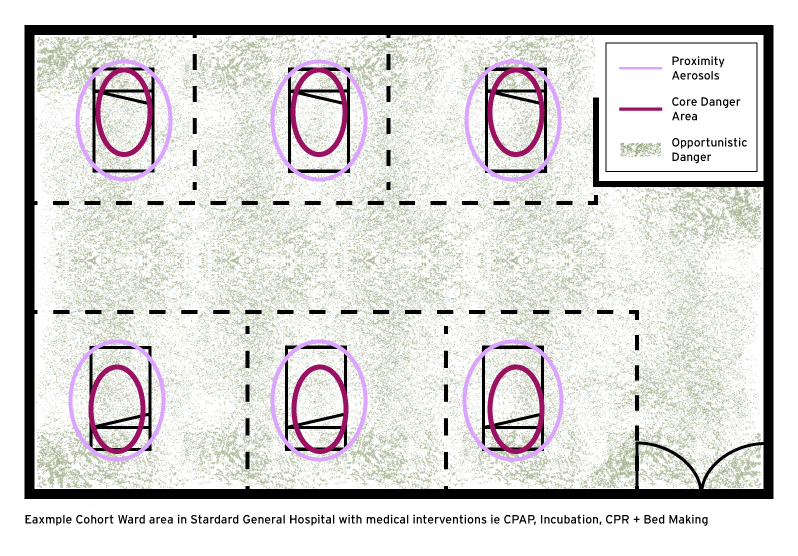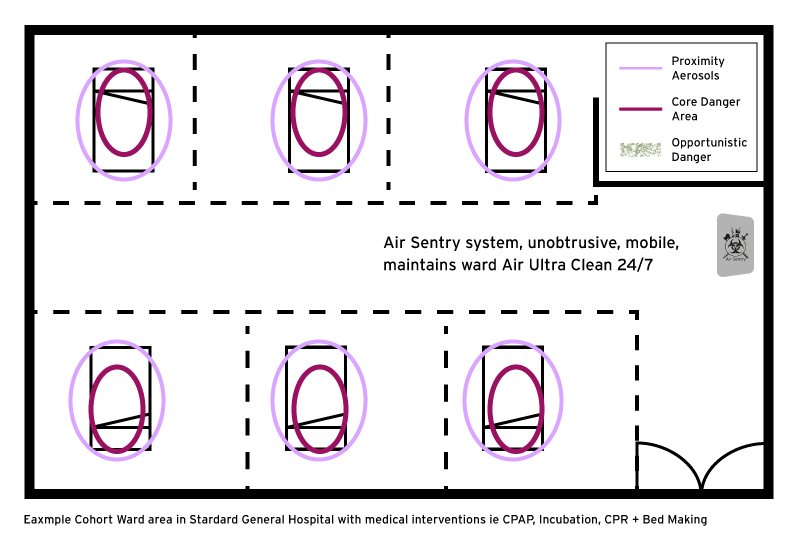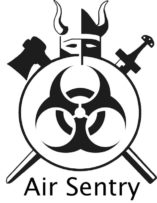Outline Example Cohort ward / A&E
Airsentry® was evolved to deal with disease situations such as Sars-Cov-2.
Initially from 2003, the system has been gradually fine tuned alongside UK hospital clients, with specific model and design changes occurring in 2006 and 2009.
1. Cohort ward protection
Airsentry® is in use for staff and patient protection in relation to coronavirus. It has been used in London for cohort ward protection.
The example below is a general ward, which in most general hospitals rely on non specialised ventilation. There is significant risk to both staff and patients in these areas, both from Sars-cov-2 and also during the recovery phase from secondary infections, such as aspergillus.

Good PPE is essential in this environment, probably more so than for ICU. These general wards and A&E departments are mostly not set up for infectious diseases. We have a client in Staffordshire who is, but this was due to an MOD request, rather than normal design procedure.

W.H.O guidance for air changes around sars-cov-2 patients cannot be met by the majority of existing NHS general ward areas. It looks for air changes of 12 times an hour, which is simply unavailable on most wards, other than specialist rooms, OR areas and specialist oncology wards. In the ward area above, Airsentry® will achieve an equivalent to 25 air changes an hour.
Airsentry® decreases both the risk and the staff pressure exponentially.
It assures a high level of air cleanliness, ultra clean (near sterile) by producing a whole room air current. This air is continuously cycled through our EN14644 part 3 bespoke filtration system which removes all particles, including coronavirus, at 0.3um or greater, with an efficiency of 99.99998%,
We can supply a clients letter in relation to the effect this has on infection control and also staff morale to accredited NHS email addresses upon request.
From a staff perspective, the system is simple, once turned on it just works quietly and it is unobtrusive. It is designed to pull the dirty air at a low level, remove nearly everything, and then return it over the patient area. The dilution effect achieved in a general ward or A&E area is equivalent to around 25 air changes an hour, without the noise or large drafts.
Power consumption is low, around 100w and the filtration is designed for a two year expected life, in a healthcare setting.
Air Sentry Product Brochure
Read full product specification and case studies.
